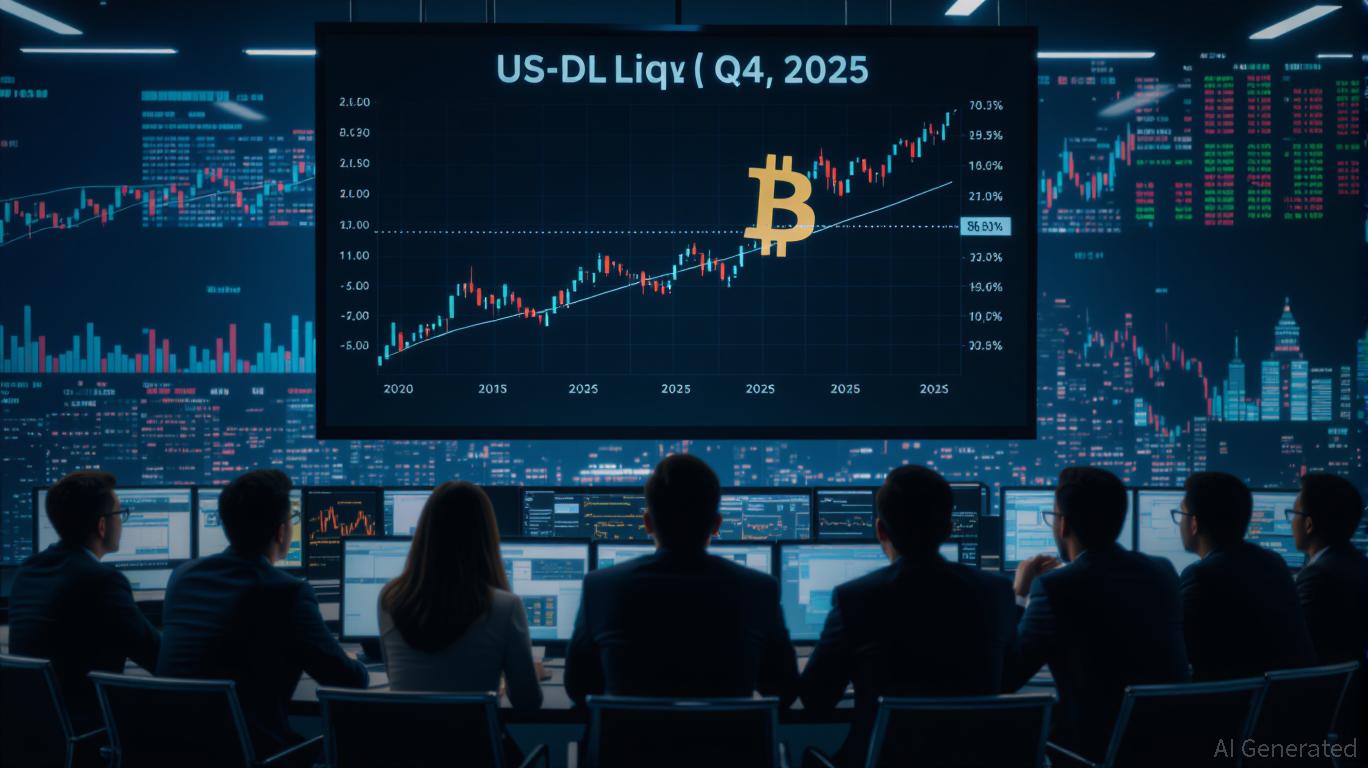Whale's $3.62M POL Withdrawal Indicates Rapid Growth in Tokenized Assets and Increased Institutional Participation
- A crypto whale withdrew $3.62M in 20M POL tokens from Binance, signaling market volatility amid tokenized assets growth. - Franklin Templeton expanded tokenized AUM to $1.7B via Binance partnership, introducing blockchain-based fund innovations. - Kraken reported 114% YoY revenue surge to $648M in Q3 2025, accelerating its $15B-valued U.S. IPO plans. - Major crypto movements and institutional adoption align with BCG's $19T 2033 tokenized real-world assets market projection.
Within the last three hours, a whale has taken out 20 million
This withdrawal comes on the heels of a collaboration between Franklin Resources' Digital Assets Group and Binance, the largest crypto exchange globally. Franklin Templeton, a prominent asset management company, has boosted its tokenized and digital assets under management (AUM) to $1.7 billion—a 75% jump since early 2025, according to the Investing.com transcript. The company has rolled out blockchain-driven features like real-time yield calculations for tokenized money market funds and has integrated its products with Binance’s global wallet. These innovations put Franklin Templeton in a strong position to benefit from the anticipated expansion of the tokenized real-world assets sector, which Boston Consulting Group projects could grow from $600 billion now to $19 trillion by 2033, as referenced in the Investing.com transcript. code="POLUSDT"
id="strategy_009"
range="3"
market="UBAX">

The whale’s significant POL withdrawal underscores the crypto market’s inherent liquidity and volatility, where large-scale transactions can sway asset values and investor sentiment. Such actions often indicate strategic hedging, speculative moves, or changes in institutional investment approaches. The timing of this withdrawal aligns with the industry’s broader momentum toward tokenization and institutional adoption, as reflected in the recent achievements of Franklin Templeton and Kraken, highlighted in the Investing.com transcript and CoinDesk report.
Disclaimer: The content of this article solely reflects the author's opinion and does not represent the platform in any capacity. This article is not intended to serve as a reference for making investment decisions.
You may also like
It’s not a bubble, because AI is already running the markets

The November 2025 Bitcoin Leverage Liquidation Event: Exposing Systemic Vulnerabilities in DeFi Lending and Margin Trading
- The 2025 Bitcoin leverage liquidation crisis exposed critical DeFi vulnerabilities, triggering $1.3B in liquidations and destabilizing protocols like Balancer and Stream Finance. - Exploits in stable pools and opaque Curator models caused $160M in frozen funds, with Euler facing $137M in bad debt after Stream Finance's xUSD collapse. - Experts warn of systemic risks as DeFi's interconnectedness amplifies failures, while solutions like RedStone's Credora aim to address real-time credit monitoring gaps. -

Bitcoin's Value Soars in November 2025: Key Macroeconomic Drivers and Growing Institutional Embrace
- Bitcoin's November 2025 surge was driven by U.S. government shutdown-induced liquidity shifts and institutional adoption of ETFs. - BlackRock's ASX Bitcoin ETF launch and JPMorgan's $343M IBIT holdings signaled growing institutional confidence in crypto. - Harvard's $100M ETF allocation and staking-based products like Bitwise's Solana ETF highlight systematic capital inflows into crypto. - Despite $578M ETF outflows in November, Bitcoin's correlation with liquidity (0.85) and global regulatory alignment

Modern Monetary Theory and Market Outlook for 2026: Does Bold Investment in Stocks and Emerging Economies Make Sense?
- Modern Monetary Theory (MMT) sparks debate in 2025 as governments expand fiscal spending amid inflation and AI-driven economic shifts. - Proponents argue deficit spending boosts growth, while critics warn of inflation risks and fiscal unsustainability as U.S. deficits hit $7 trillion. - Fed officials clash over policy: Hammack prioritizes inflation control, while Jefferson advocates patience as AI reshapes labor markets. - MMT-driven liquidity could lift emerging markets if Fed rates stay low, but sudden
